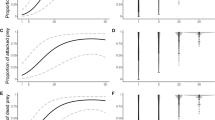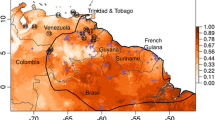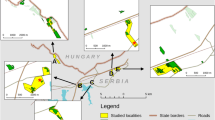Abstract
On the sub-Antarctic island of South Georgia two species of predatory beetle, Trechisibus antarcticus and Oopterus soledadinus (Coleoptera, Carabidae), were accidentally introduced. The colonisation process offers unique opportunities for testing ecological hypotheses in the field. As a basis for such studies, the spatial dynamics of the two species in the coastal lowland around Stromness Bay and Cumberland Bay were monitored during the period 1988–1996. Data are presented on the expansion of the two species and on the thermal characteristics of the tussock-forming grass Parodiochloa flabellata, which dominates the coastal lowlands. The largest expansion was shown by T. antarcticus, occurring as two populations in the Stromness Bay area. The origin of one of the populations, discovered in 1982, is Husvik Harbour, from where the species has colonised the central part of Stromness Bay. The second population, discovered in 1988 at Harbour Point, is invading the northern part of the area around Stromness Bay. Up to the present, three populations of O. soledadinus have been discovered. One population was found in 1988 at Husvik Harbour, co-existing with T. antarcticus, from where it is slowly expanding its distribution into the coastal zone. A second, very small, population of O. soledadinus was found in 1996 at Jason Harbour (Cumberland West Bay). The largest population of O. soledadinus, first reported in 1963, inhabits the area around Grytviken and King Edward Point (Cumberland East Bay), where it is the sole carabid species. The tussock grass vegetation offers a highly stable thermal environment compared with the more variable surroundings. Together with an ample food supply in the form of small arthropods and beetle larvae, and a vacant niche for arthropod predators, the benign microclimate of the tussock vegetation may explain the success of these predator introductions. Results of field observations on population parameters of the carabids, and laboratory measurement of egg production indicate the potential for large-scale co-existence.
Similar content being viewed by others
Author information
Authors and Affiliations
Additional information
Accepted: 10 November 1998
Rights and permissions
About this article
Cite this article
Brandjes, G., Block, W. & Ernsting, G. Spatial dynamics of two introduced species of carabid beetles on the sub-Antarctic island of South Georgia. Polar Biol 21, 326–334 (1999). https://doi.org/10.1007/s003000050369
Issue Date:
DOI: https://doi.org/10.1007/s003000050369




